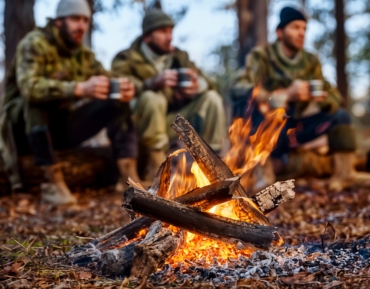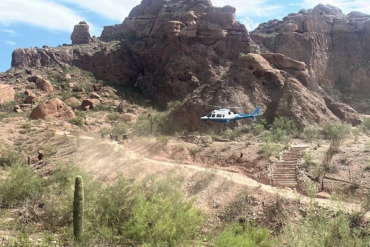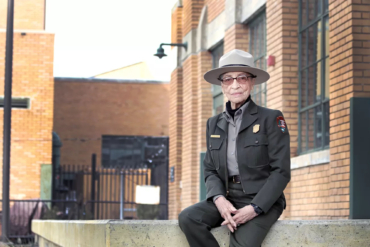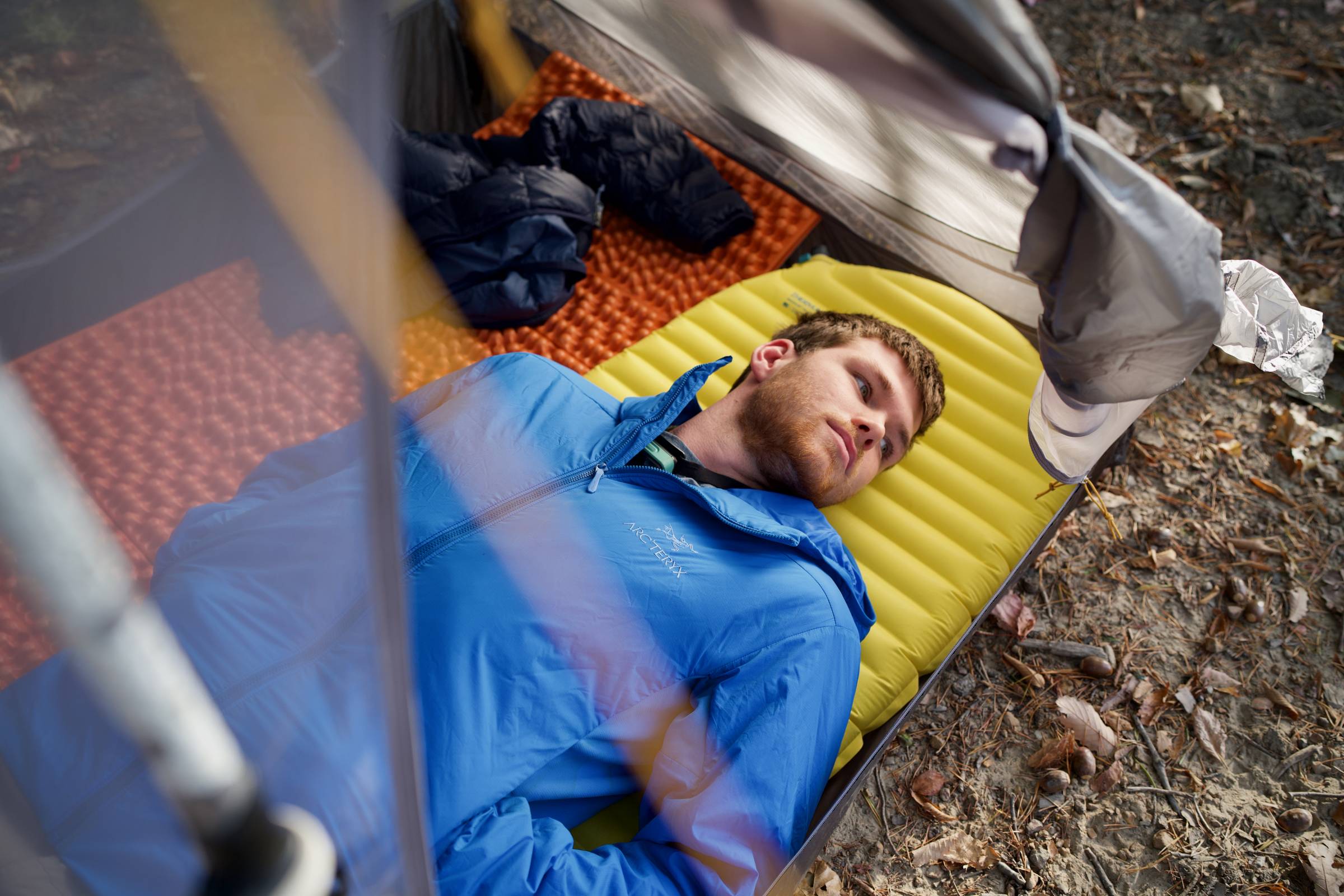Taking care of your feet inevitably leads to better, healthier, and less precarious adventures on trail.
Presented by
Being proactive always beats being reactive when it comes to foot care on the trail. Whether you’re hiking, backpacking, hunting, or trekking the Pacific Crest Trail, there are steps you can take to mitigate foot-related disaster in the field.
And, really, a million foot-related things can make life miserable on trail. Blisters, plantar fasciitis, trench foot (gross, you guys), ingrown toenails, lost toenails, stress fractures, and any sort of unforeseen injury can force you to turn around and head back to the nearest trailhead at a very slow rate.
So, how do you make sure what’s in your control is actually controlled?
You prep. And you plan. And you proceed with stocking up on little things that can help in big ways on the trail.
Columbia Facet 60 OutDry Low

Fuel your inner fire with the Facet 60 OutDry Low. A technical hiker with a running-inspired fit, this shoe offers extra-light, responsive Techlite+ cushioning, Navic Fit lacing system, and a gripping outsole to tackle any terrain.
Made with breathable waterproofing, you can go from trail to town in any weather.
Foot Care Before Your Trip
Trim Your Toenails

It seems like a gimme, but sometimes you won’t realize you forgot to do it until it’s too late. Keep your toenails trimmed close. Even a slightly too-long nail can cut into the neighboring toe, causing a sore abrasion or laceration that can become an ongoing pain. It may be worth carrying a nail clipper on longer trips just to make quick trims in the field if you notice a sore spot developing.
If you’re prone to ingrown toenails, pay attention to how you trim. The most common reason for ingrown toenails is that you — yes, you — are cutting your toenails incorrectly.
When you cut your toenails, cut them straight across. Don’t curve the ends or do anything crazy. And if you already have ingrown toenails, do all you can to get them taken care of prior to a hike.
Some folks will need to see a podiatrist. Better do this prior. Not many of those make backcountry calls on the trail.
Load Up on Wool Socks
Nothing. Beats. Wool. Yes, you will spend $20 on a single pair of socks. No, you will not regret it. The one mistake that can really set you back on the trail is not having enough of these bad boys in your pack.
I recommend bringing at least three pairs of wool or wool-blend socks on the average overnight backpacking trip. Two for hiking, one for sleeping.
There is no more ultimate luxury than stuffing your feet into an extremely cush pair of wool socks for the night after a long day on your feet. And luckily, a lot of high-end sock manufacturers have insane warranties that all but guarantee your investment. You won’t be sorry.
Stock Your First Aid Kit

A plethora of items can help in myriad ways on the trail. Vaseline or foot lube (like Foot Kinetics Hike Goo) can provide a bit of slide when you find friction after a few miles. Neosporin is crucial for a variety of wounds, but especially the bacteria-rich grounds of your feet once the skin breaks.
I’ve even used basic Secret powder deodorant on the trail to keep my feet unblistered and unblemished. It can wildly reduce issues with chafing anywhere on your body, feet notwithstanding.
For blister care, Liquid New Skin is at the top of my list and it has been for more than 20 years. This tiny bottle of amazingness burns like a mo-fo when you apply it, but it’s kept me in the field much longer than anything else.
A combo of gauze and duct tape has also made for a helluva dressing in the field. When bandages won’t hold, duct tape usually will.
Boots vs. Shoes and Also, Buy Gaiters
I wrote an ENTIRE article on this topic, and I’d be remiss to leave it out here. In short, understand what’s needed for the terrain you’ll be encountering. And buy correctly fitted shoes with enough room for your feet and toes to swell a bit. They’ll do that in the mountains.
Long-distance hikers tend toward hiking or trail running shoes. When they’re wet, they dry out a lot faster than waterproof footwear. I prefer these for most adventures.
But, boots are necessary for a lot of folks. If you’re going off-trail, into big country, or traveling in potential snow, boots are the right choice.
If you choose to go the boot route, you should also invest in a pair of legit gaiters to keep water, gravel, and dirt out of your footwear.
Short, less substantial gaiters are also a great way to go if you choose to go a shoe route. Keeping everything out of your shoes means less abrasion, less stopping, and fewer issues overall.
Foot Care in the Field
Take Breaks. And Take as Many as You Need

The “go” mentality is the “no” mentality when it comes to foot care.
Pushing past pain when it comes to something abrasive only leads down a dark and heavy road. It only gets worse, not better.
If you feel the slightest rub, the smallest hot spot, that stone in your shoe, it’s time to pull over and readjust. It’s amazing how quickly a hot spot turns into a blister.
Pull over. Take your shoes and socks off. Let your feet dry out if they’re wet or sweaty. Apply Gold Bond, deodorant, lube, or whatever you need given the circumstances.
If your socks are wet, switch them out for another pair. Hang them on your pack if it’s sunny or stash them to dry later at camp.
Blisters Happen

You’ve stocked up on what you need. You’ve prepped. And still, it’s happened.
For me, I pop the blister, peel it if necessary (I really try not to), apply the fiery hell that is Liquid New Skin, and apply another coat. Scream internally. Truck on.
Other approaches are more genteel but often less effective. Duct tape — in my experience — blows moleskin out of the water. I apply a square of gauze with some Neosporin or Vaseline to keep the tape off the blister, and then tape it as much as necessary.
The biggest killer is going to be moisture. If you’re stuck in really wet conditions, I wish you luck with every treatment. Even New Skin needs multiple applications when you just can’t seem to dry out.
As many blisters as I’ve had, the best treatment just seems to be prevention.
Foot Care at Camp
Keep Your Feet Clean & Cared For
Are your feet gross? Please clean them. Dr. Bronner’s is a decent travel-size soap to carry in the field, but I prefer using cleansing wipes, as they’re light and easy to deal with in a short period of time.
If you’ve gotten blisters or any other sort of foot malady, take time to let your feet dry, blisters breathe, socks air out, and tend to any issues while you have space and time to do it. A little air can do wonders for a blister or a rub.
Then, reapply whatever wound dressings and throw on those cushy socks I told you about. Promise, they’re worth the extra weight.
Final Thoughts on Taking Care of Your Feet
There’s a lot to be said for motoring on your own two feet. Seeing the world slowly is a gift, but that gift turns real sour once your feet hurt.
I hate to say we all learn best by mistakes. If you’ve never had a blister, you won’t care ’til you do. I’ve had more blisters than one should endure in a lifetime, but prep wasn’t really my deal when I was younger and a bit brasher.
These days, I prefer to hike, pack, and hunt in comfort. Preventing foot problems and keeping my foot health top of mind is now a priority whenever I even think of heading into the backcountry.
Great footwear, a well-stocked first aid kit, and a promise to pull over when trouble first reigns can keep you on the trail longer. And you’ll be happier for it. A little investment leads up to a big payoff.
Happy trails out there, and I wish you happy feet to trek through all the bends, turns, and rivers you’ll cross.![]()
This article is sponsored by Columbia. Shop the Facet collection and more hiking footwear.






